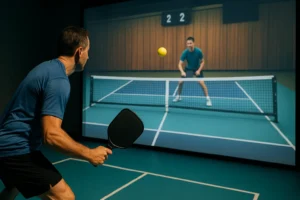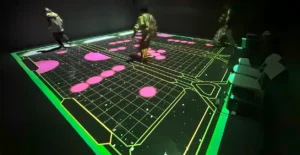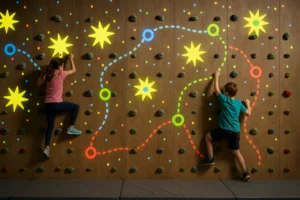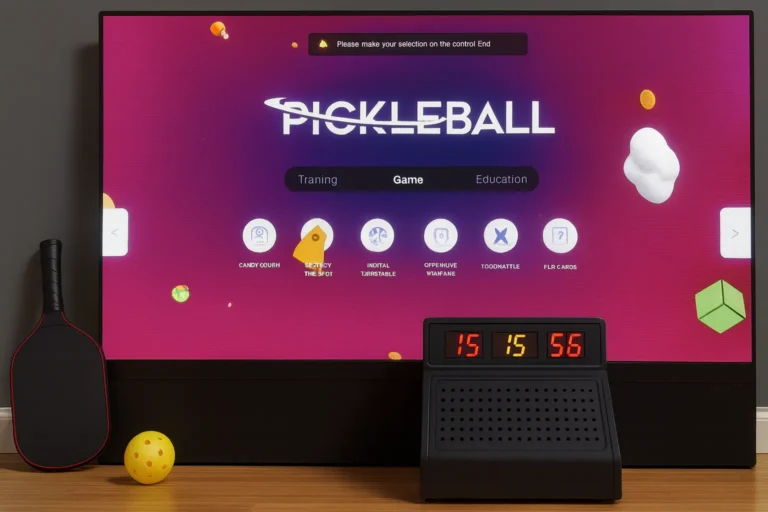As technology continues to blur the lines between digital and physical spaces, the slider screen digital door system has emerged as an innovative solution for creating interactive environments. Imagine a doorway that’s not just a passage but a digital canvas that responds to touch, movement, or even games. This isn’t science fiction—it’s a reality powered by interactive technology. From offices to retail stores, and even homes, slider screen digital door systems offer a seamless blend of functionality and engagement, transforming static doors into dynamic experiences.
What Is a Slider Screen Digital Door System?
At its core, a slider screen digital door system is a door fitted with digital screens that can be used for various purposes, such as displaying information, playing interactive games, or projecting graphics. Using digital slider screen mapping technology, these doors can respond to user interactions, making them ideal for both functional and entertaining applications.
These systems combine LED displays, projection mapping, and touch-sensitive screens, creating a unique experience every time someone passes through. The screen can be set to display anything from a simple welcome message to complex animations, transforming the entryway into a truly immersive experience.
Key Features of Slider Screen Digital Door Systems:
- Interactive Display: Allows users to interact with the screen, turning a standard door into an engaging experience.
- Projection Mapping: Uses slider screen floor door mapping devices to project dynamic visuals onto the screen, creating a 3D-like effect.
- LED Display Activation: Capable of running interactive slider screen LED display activation games for entertainment or educational purposes.
These features make slider screen digital door systems an attractive option for both commercial and residential settings, providing functionality and aesthetic appeal.

How Does Digital Slider Screen Mapping Technology Work?
One of the biggest breakthroughs in these systems is the digital slider screen mapping technology. Essentially, this technology allows digital screens to respond to user actions and environmental factors. Using sensors, the system maps movements and touch points on the screen, allowing it to deliver dynamic content that changes based on user interaction.
For example, in a retail store, a slider screen digital door could display products as someone walks by, offering a personalized shopping experience. Or in a corporate setting, it could provide wayfinding information based on the user’s location within the building. The use of mapping technology enables these doors to go beyond simple displays and become truly interactive systems.
Applications of Digital Slider Screen Mapping Technology:
- Advertising and Marketing: Engage customers with interactive ads that respond to movement.
- Education and Training: Use interactive displays for hands-on learning experiences.
- Entertainment: Host activation games on the LED display to attract customers or guests.
This technology isn’t just about displaying information; it’s about creating an interactive experience that draws people in and engages them on a new level.
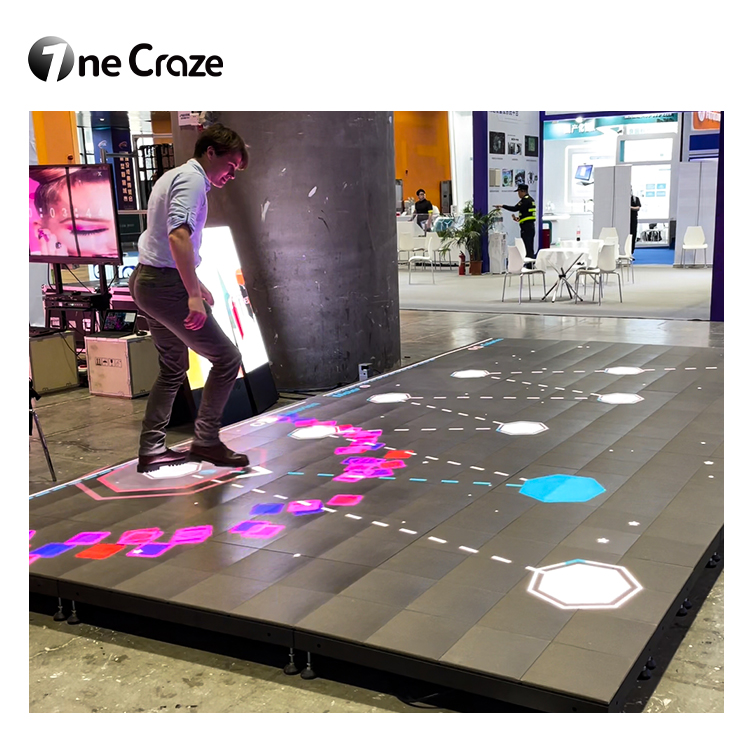
The Role of Interactive Slider Screen LED Display Activation Games
One of the most exciting applications of slider screen digital doors is in the world of interactive games. The LED display can be programmed to offer activation games, which are perfect for locations that want to boost customer engagement or provide entertainment.
Imagine a hotel where guests can play a quick game on the digital door screen while waiting to check in, or a retail store where interactive promotions encourage customers to stay longer and engage with the brand.
Examples of Activation Games for Slider Screens:
- Memory Games: Guests or customers can test their memory by matching images or colors displayed on the screen.
- Trivia Quizzes: Questions pop up on the door, engaging visitors in a fun, interactive way.
- Product Hunt: In retail environments, customers can play a game to “hunt” for specific products, enhancing brand engagement and driving sales.
By integrating interactive slider screen LED display activation games, businesses can create unique, memorable experiences that keep people coming back.
Exploring Slider Screen Floor Door Mapping Devices
The magic behind these digital doors wouldn’t be possible without slider screen floor door mapping devices. These devices use sensors and mapping software to track user movements across the floor near the door, making the entire interaction seamless and intuitive.
The device can detect the position of a user as they approach the door and adjust the display accordingly. For instance, a mapping device could trigger a welcome message for each individual, or offer personalized product recommendations in a retail setting.
Benefits of Floor Door Mapping Devices:
- Enhanced User Experience: Provides personalized interactions, making users feel valued.
- Increased Engagement: Encourages users to spend more time interacting with the system.
- Customizable Content: Adjusts the display based on user behavior, creating a unique experience for each visitor.
Slider screen floor door mapping devices play a crucial role in making these doors more than just static displays. They turn them into intelligent, responsive systems that adapt to each user.
Digital Slider Screen Display Projection Wall Software
Another critical component is the digital slider screen display projection wall software. This software controls the visual content on the screen, allowing for high-quality images and videos to be projected with precision. It can create 3D effects, display animations, or project realistic images onto the door’s surface.
The software is highly customizable, enabling businesses and homeowners to adjust it to their specific needs. Whether it’s a constantly changing digital art display in a home or targeted ads in a retail store, the possibilities are virtually limitless.
Uses for Display Projection Wall Software:
- Art and Ambiance: Create dynamic art displays or ambient visuals in homes or offices.
- Product Demos: Showcase new products or promotions on the door in high-definition.
- Corporate Branding: Project logos, corporate messages, or motivational quotes in business environments.
By using advanced projection wall software, slider screen digital doors can serve both aesthetic and functional purposes, making them ideal for a variety of applications.
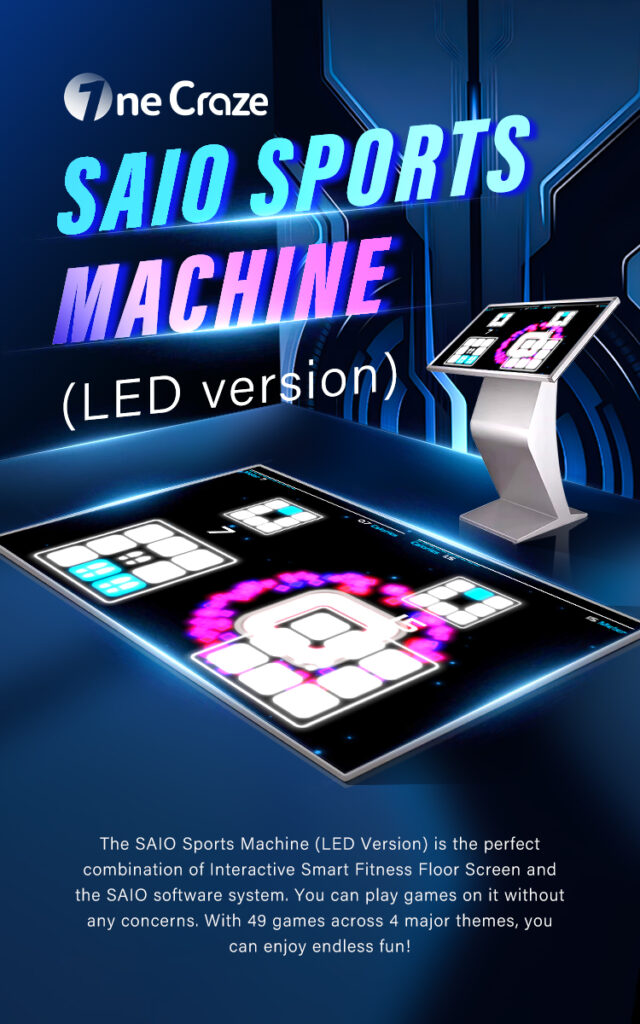
Who Are the Top Suppliers and Manufacturers?
If you’re interested in integrating a slider screen digital door system into your space, knowing where to buy one is essential. Several manufacturers specialize in these high-tech door systems, offering options tailored to different industries.
Here are some of the leading suppliers and manufacturers of digital slider screen door systems:
- Emulator Systems Inc.: Known for custom solutions that fit various commercial needs.
- Screen Solutions: Offers affordable, high-quality digital slider doors with interactive features.
- LED Innovations: Specializes in LED activation games and high-definition displays.
When selecting a supplier, consider factors such as the quality of their software, pricing options, and customer reviews. Many companies allow you to order online, making it easy to compare features and find the best solution for your needs.
Prices vary widely depending on the system’s features and customization options. Generally, basic systems start around $1,000, while advanced systems with interactive games and projection software can go upwards of $10,000.
Yes, but you’ll need a system designed for outdoor use with weather-resistant materials and screens. Consult the manufacturer for specific recommendations.
Most systems require minimal maintenance, usually limited to software updates and occasional cleaning of the screens. Some manufacturers offer maintenance plans.




